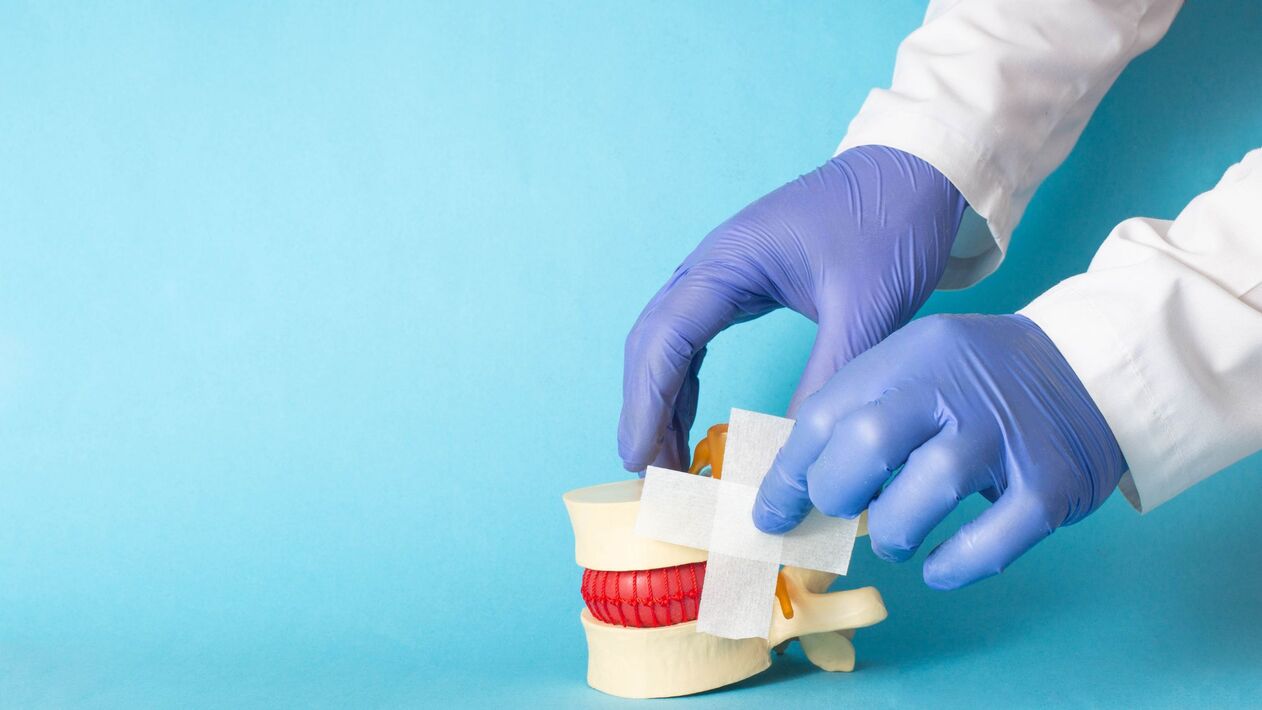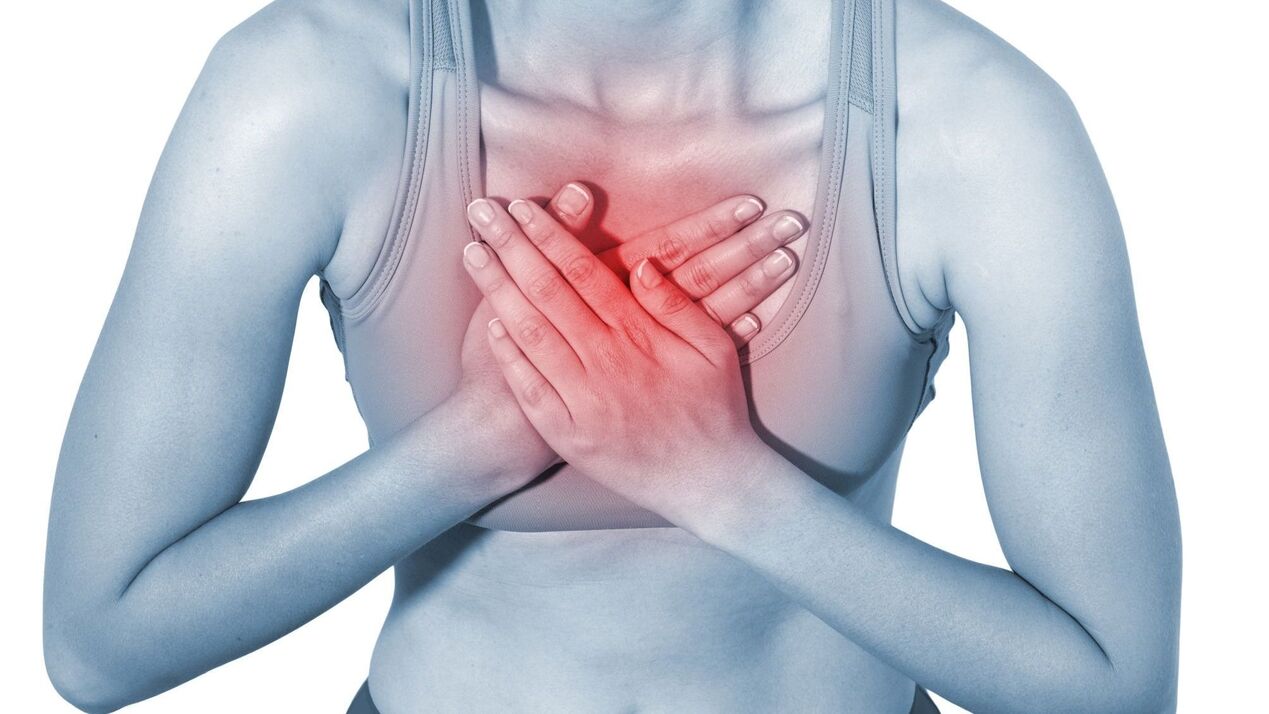Osteonecrosis is a long-term disease. Usually, when assessing the severity of pathological processes, four stages are distinguished:
- The first stage is a period in which initial changes occur in the annulus fibrosus of the intervertebral disc that the patient often does not notice;
- The second stage corresponds to the appearance of instability in the affected spinal segment, the height of the intervertebral disc decreases;
- The third stage is characterized by the appearance of hernias or osteochondral growths - bone spurs, the fibrous ring at this stage is almost destroyed;
- The fourth stage is characterized by irreversible damage to all structures that provide joints between the vertebrae, fibrosis of the intervertebral disc and loss of mobility in the affected segment.

Causes of osteoarthritis in the chest area
It has been proven that from about the age of 20, our vertebrae begin to gradually degenerate. With age, wear and tear on the spine increases. Due to the degenerative process, the thickness of the intervertebral disc decreases, acting as a shock absorber. In addition, abnormal structures appear at the bony edges of adjacent vertebrae: bone spurs, spinal spurs that reduce the range of motion.
Degenerative-dystrophic changes begin in the nucleus pulposus, then spread to the annulus fibrosus as well as other structural components of the vertebrae, causing the appearance of characteristic symptoms.
Due to dehydration, the nucleus pulposus no longer distributes the vertical load evenly. This negatively affects the yarn ring. Excessive compression (compression) leads to its mechanical damage, the appearance of cracks and cracks. The joints begin to experience excessive stress, which gradually leads to spinal instability and pain.
Therefore, the main cause of osteoarthritis is natural aging. However, its development is also facilitated by a combination of many unfavorable factors that increase the likelihood of manifestation of the disease. Including:
- Smoke;
- Perform surgical interventions on the spine;
- Injury to this part of the spine;
- Curvature of the spine (scoliosis);
- Weakness of back muscles;
- Excess body weight;
- Increased load on the spine.
It is believed that the degeneration (aging) of cartilage and bone tissue of the vertebrae is genetically determined and that progression to a disease state with characteristic symptoms and manifestations occurs under the influence ofexternal and internal factors. Procedures can be started earlier if they have previously been damaged (mechanical, inflammatory, etc. ).
Symptoms of osteoarthritis in the thoracic region
Symptoms of thoracic spondylosis will depend on the stage of the pathological process and the existing structural disorders. Unlike other regions of the spine (cervical, lumbar), nerve root syndromes and other neurological complications are less typical in the thoracic region. This is explained by the presence of the thoracic skeleton, which limits the displacement and compression of this part of the spine. Most often, pain in the thoracic region (lumbar or thoracic back pain) is associated with fixation of the joints between the vertebrae.
Authority to solve! Angina, or dorsago, in neurology refers to acute, high-intensity pain occurring in the thoracic spine, often associated with difficulty breathing. The cause of the condition lies in severe spasms of the back muscles. It cannot be ignored, because. . . Myocardial infarction can start similarly, and frequent low back pain can be related to serious diseases in the body.
The pain can last from a few hours to a few days. As a rule, it is not as intense as damage to other parts of the spine, but also involves spinal movements. In addition, increased muscle tone in this area is also detected, which can be combined with weakness and numbness in the hands.
The pain can be dull, burning, deep, paroxysmal or constant. It can be felt in the chest, in the heart area and other organs. The patient described it as "stabbing in the chest", "using a ring to press on the chest", "using a knife between the shoulder blades". This part is characterized by radiating and lumbar pain associated with sighing, coughing, and sudden movements of the chest.
If left untreated, thoracic spine osteoarthritis is often complicated by intercostal neuralgia. In this case, the burning pain may be localized in the heart area and the patient may confuse it with symptoms of heart disease.

Important! If you have pain in the heart area, you should not try to make a differential diagnosis on your own. To eliminate heart diseases and stop the progression of pathological processes in the spine, it is important not to delay seeing a doctor, not to wait for the pain to go away, and not to self-medicate.
Pain may increase with physical activity, bending, and psycho-emotional stress. When the extreme vertebrae of this area are affected, pain can radiate to the lower back, sacrum, and even the buttocks.
Diagnosis of thoracic osteoarthritis
Diagnosis of thoracic osteoarthritis is a multi-stage process. First of all, the doctor will collect a history:
- Find out your medical history;
- Does anyone in your family have spinal disease?
- How long ago the symptoms began and how intense they were;
- What comorbidities are there?
A physical examination of the patient is required, including skin examination, assessment of postural disorders, and palpation (feeling) of the muscles located near the spine. Neurological tests may be performed to make the diagnosis.
Diagnostic tools
Diagnostic imaging allows you to assess the extent of cartilage damage, identify other existing disorders, and rule out diseases with similar symptoms. Recommended methods for specifically diagnosing thoracic spondylosis include:
- X-ray (spondylography) - provides information about the structure of bones, the presence of bone spurs, the condition of the facet joints;
- CT (computed tomography) allows you to examine everything in detail and, if necessary, take measurements, it has an advantage over MRI in diagnosing structural bone pathology;
- MRI (magnetic resonance imaging) allows you to evaluate the condition of soft tissues, diagnose inflammatory processes, tumors, spinal herniation, identify pathological changes in cartilage, bones, ligaments, blood vessels andDetermine the narrowing of the spinal canal. Using MRI, vascular diseases and tissue circulatory disorders in the thoracic spine are detected.
Blockade medications may also be used for diagnostic purposes. Because of the variety of pain manifestations, additional investigations are often needed to rule out:
- Angina;
- Heart attack;
- Aortic aneurysm,
- Cholecystitis,
- Stomach ulcers;
- Pneumonia;
- Cancer, etc. v.
Treatment methods for thoracic osteoarthritis

Thoracic spondylosis is a disease that requires complex treatment. In addition to drug treatment for pain relief, it is important to contact specialists in the field of trauma and neurology to find the exact cause of worrying symptoms.
Treatment tactics will depend on the severity of the disease. Typically, the first treatment option is conservative therapy, such as physical therapy, nonsteroidal anti-inflammatory drugs, heat therapy, and nerve block injections.
Exercise therapy for osteoarthritis in the thoracic region allows you to strengthen the muscles of the back and interscapular region, forming a muscle corset and correct posture, helping to relax muscles and improve blood circulation in the thoracic region. this spinal segment. For osteoarthritis in this area, breathing exercises, bringing the shoulder blades together and rotating the shoulders are very useful.
Massage helps normalize blood supply, lymphatic drainage and activate metabolic processes. It is prescribed when there are no exacerbations, when the patient does not have severe pain. Many types of medical massage are used: manual (hand), underwater, vacuum.
Manual therapy is also very popular. Orthopedists work with blocks and clamps of the musculoskeletal system, removing them using a variety of techniques. Acupressure or acupressure can also be performed for acute pain. During that time, the doctor presses his fingers on certain points with varying intensities, which will have a healing effect on the entire body.
Physical therapy techniques are quite effective in treating lumbar spondylosis. They help relieve pain, improve blood circulation and strengthen spinal muscles. Among them:
- Ultrasound therapy;
- Drug electrophoresis;
- Spinal laser therapy;
- Transcutaneous electrical neuromuscular stimulation;
- Exposure to magnetic fields;
- Electroconvulsive therapy.
To improve treatment effectiveness, pharmacological and non-pharmacological treatment methods should be combined. Treatment of thoracic spondylosis can take a lot of time, but results will be evident after the first treatments. The main thing is not to delay seeing a doctor and starting treatment at the early stages of the disease.
If conservative treatment does not help, surgery may be required. Typically, decompression and stabilization operations are performed. They allow you to stop compression of the spinal cord, nerve roots due to herniation, bone spurs or hypertrophied ligaments and immobilize the affected segment.
After surgical treatment, you will need to wear a special corset for a period of time. After discharge from the hospital, a course of medical rehabilitation is prescribed.
Treatment of thoracic osteoarthritis at home
Treating thoracic osteoarthritis at home can be effective if certain conditions are met. First of all, the diagnosis must be determined by a specialist after a complete examination. Treatment should also be discussed with your doctor to make sure there are no contraindications in the presence of comorbid conditions.
The most important and basic thing is to maintain a healthy lifestyle, control body weight and get enough physical activity. The best way to deal with back pain is to exercise. They will help strengthen the back muscles, improve blood circulation, cope with stress more easily and thus prevent the progression of the disease.
If the condition gets worse or there is severe, severe pain, it is better to lie down and make sure the spine rests. Heat and massage therapy help to cope with unpleasant sensations. In any case, home treatment does not replace consultation with a specialist and implementation of his recommendations. Uncontrolled self-medication can lead to aggravation of the condition and the development of complications.
Which doctor should I contact?
Neurologists and orthopedists treat thoracic spondylosis. They conduct diagnosis, diagnosis and select appropriate treatment methods. Patients may also need to consult a physical and exercise therapist.
If you have pain in the chest area, you can also consult a therapist. He will analyze clinical manifestations, prescribe the necessary tests and refer you to a specialist.
Treatment of breast bone degeneration
The doctors at your regional clinic will help you deal with the symptoms of thoracic osteoarthritis. Almost every clinic has the necessary modern diagnostic equipment, which allows you to get the most accurate information about the condition of the spine and choose the most effective treatment method. Experienced specialists of various specialties help patients recover in comfortable conditions: neurologists, orthopedists, physiotherapists, massage therapists, therapists.
If necessary, in modern realities you can get advice from other specialized experts in the shortest possible time and without having to queue. Consultants are ready to assist if you have any questions. Fill out the feedback form on the Internet and they will definitely call you back.
























